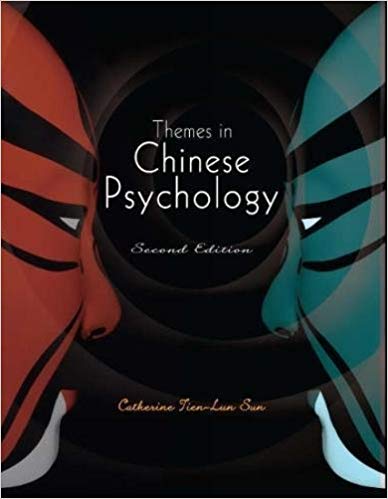Description
Themes in Chinese Psychology 2nd edition by Catherine Tien – Test Bank
CHAPTER 7: FACE MANAGEMENT AND PATTERNS OF COMMUNICATION
Multiple Choice Questions with Answers
1. The Chinese concept of face is rooted in
- Taoism
- Confucianism
- Buddhism
- Confucianism and Buddhism
Answer: b
2. Thesinglemostimportantconceptthatguidesindividualstoactappropriatelyin a given context is
a. ritual propriety
b. filial piety
c. self cultivation d. five interlinkage
Answer: a
3. Instrumentaltiesdescribes
a. Relationships between strangers
b. Relationships between family members and close friends
c. Relationships between people outside the family who are known to each other d. Relationship between the ruler and the ruled
Answer: a
4. Thebuildingofpersonaltiesisdependentupon
- personality
- interest
- family background
- finding shared identification
Answer: d
5. Whichofthefollowingisnotatacticusedtobuildandenhancepersonalties?
- the presentation of a gift
- the holding of a banquet for the other party
- praising each other
- hiring the offspring of the other party
Answer: c
6. Confucianismadvocatesruleby a. law
© 2012 Cengage Learning Asia
- legal system
- man
- fate
Answer: c
7. ThefirstWesternerstowriteaboutfaceandfaceworkis
- Toomey Goffman
- Erving Goffman
- Otezel Gabrenya
- Toomey Gabrenya
Answer: b
8. a. b. c. d.
Whichtherapeutictechniqueisnotcompatiblewithfacemanagement? Reflective listening
confrontation
paraphrasing
client‐centred feedback
Answer: b
9. a. b. c. d.
InHwang’sfaceandfavormodel,interpersonaltiesareclassifiedasfollows: descriptive, mixed and prescriptive
expressive, mixed and instrumental
intimate, casual and distant
vertical, mixed and horizontal
Answer: b
10. In Hwang’s face and favor model, expressive ties are governed by
- the empathic reciprocity rule
- the need rule
- the interplay between petitioners for and allocators of resources
- the people involved keep in touch with each other
Answer: b
11. Whichoneofthefollowingisnotadifferencebetweenlianandmianzi?
- lian is an evaluation of the whole person, and mian zi is an evaluation of some
of an individual’s attributes.
- lian is more explicit, mian zi is more implicit
- lian is linked to one’s moral character, mian zi is more influenced by forces
external to oneself
- a person can have all sorts of mian zi, but only one lian
Answer: c
© 2012 Cengage Learning Asia
12. The etic approach to studying communication
- considers communication along the individual‐collective continuum
- studies Indigenous patterns of communication
- compares communication patterns in different cultures
- appraises communication with respect to the level of openness
Answer: c
13. Chinese value implicit communication because
a. it enables a person to negotiate meanings with others
b. it is non‐confrontational and less directive
c. it enables a person to navigate between levels of meaning d. it takes group values into consideration
Answer: a

Reviews
There are no reviews yet.